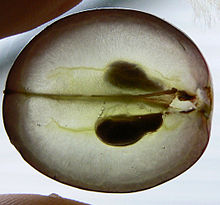– Sucrose
– Sucrose is a disaccharide composed of glucose and fructose.
– Invertase enzyme cleaves the glycosidic linkage in sucrose.
– Most wines contain little sucrose naturally from grapes.
– Exception is Champagne and sparkling wines where sucrose is added post-fermentation.
– Addition of liqueur d’expédition is a common practice in Champagne.
– Glucose
– Glucose and fructose are primary sugars in wine grapes.
– Glucose tastes less sweet than fructose in wine.
– At ripening, there’s usually more glucose than fructose in grapes.
– Yeast cells break down and convert glucose first during fermentation.
– Glycosides formation from glucose molecules impacts wine flavor.
– Fructose
– In wines like Port, higher fructose content creates sweetness.
– Fructose is a principal sugar in wine production.
– Overripe grapes have higher fructose levels.
– Fructose tastes twice as sweet as glucose in wine.
– Techniques like süssreserve and fortification affect fructose levels in wine.
– In wine tasting
– Sensitivity to sweetness in wine is lower compared to bitterness or sourness.
– Most people can detect sugar in wines with 1-2.5% residual sugar.
– Acidity and tannins can mask sweetness perception in wine.
– Flash release
– Flash release is a wine pressing technique.
– It enhances extraction of wine polysaccharides.
Sugars in wine are at the heart of what makes winemaking possible. During the process of fermentation, sugars from wine grapes are broken down and converted by yeast into alcohol (ethanol) and carbon dioxide. Grapes accumulate sugars as they grow on the grapevine through the translocation of sucrose molecules that are produced by photosynthesis from the leaves. During ripening the sucrose molecules are hydrolyzed (separated) by the enzyme invertase into glucose and fructose. By the time of harvest, between 15 and 25% of the grape will be composed of simple sugars. Both glucose and fructose are six-carbon sugars but three-, four-, five- and seven-carbon sugars are also present in the grape. Not all sugars are fermentable, with sugars like the five-carbon arabinose, rhamnose and xylose still being present in the wine after fermentation. Very high sugar content will effectively kill the yeast once a certain (high) alcohol content is reached. For these reasons, no wine is ever fermented completely "dry" (meaning without any residual sugar). Sugar's role in dictating the final alcohol content of the wine (and such its resulting body and "mouth-feel") sometimes encourages winemakers to add sugar (usually sucrose) during winemaking in a process known as chaptalization solely in order to boost the alcohol content – chaptalization does not increase the sweetness of a wine.

